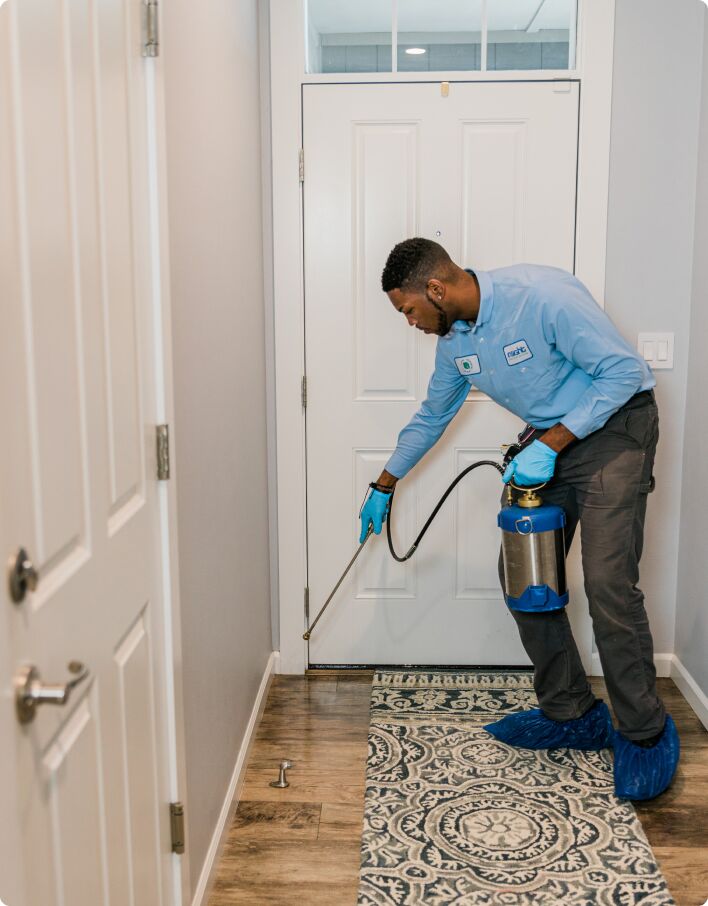Reliable A1 Bed Bug Treatment in Charlotte - Safe and Proven Methods
Bed Pest Treatment Malfunction: Contrasting Chemical Vs. Non-Chemical Solutions
In the world of bug control, specifically when taking care of the relentless problem of bed bugs, the choice in between chemical and non-chemical therapy options can be an essential one. Both methods offer unique advantages and downsides, influencing factors such as efficiency, security considerations, and overall expense. By checking out the nuanced details of each method, a clearer understanding of which path to go after in addressing a bed insect infestation can be achieved.
Performance of Chemical Therapies
Chemical therapies for bed pest problems have been commonly acknowledged for their quick and powerful effectiveness in removing these parasites. When thinking about the performance of chemical treatments, it is essential to comprehend that they can provide a extensive and fast solution to a bed pest trouble. Specialist pest control experts frequently depend on insecticides to target bed insects at numerous phases of their life cycle, consisting of grownups, nymphs, and eggs. These chemicals commonly function by interfering with the bed insects' nerve system, leading to paralysis and eventual death.
Furthermore, chemical therapies have the advantage of supplying recurring impacts, meaning that they can proceed to remove bed pests even after the initial application. This residual action is especially beneficial in combating any type of prospective re-infestations. Furthermore, the fast activity of chemical therapies can bring alleviation to people dealing with serious bed pest infestations, permitting them to restore control of their space promptly.
Safety And Security Interest In Chemical Solutions
When utilizing chemical solutions for bed bug treatment is making certain the security of owners and the setting,One essential facet that calls for cautious factor to consider. While chemical therapies can be efficient in removing bed insects, they may posture risks if not managed effectively. Among the primary safety interest in chemical solutions is the potential injury they can trigger to human health and wellness. Exposure to particular chemicals made use of in bed pest therapies can result in breathing problems, skin inflammation, or other damaging responses, specifically in people with pre-existing conditions or sensitivities. Furthermore, inappropriate application or dose of chemical pesticides can lead to poisonous deposits sticking around in the cured area, presenting lasting health risks to passengers.
Additionally, the environmental influence of chemical services is another substantial consideration. Some pesticides utilized in bed insect treatments may be hazardous to advantageous bugs, wild animals, and communities if they seep right into the dirt or water supply. It is necessary to use chemical treatments carefully, following safety guidelines, and taking into consideration much less toxic alternatives to alleviate these threats and guarantee the efficient and secure monitoring of bed insect invasions.
Advantages of Non-Chemical Strategies
Taking into consideration the possible safety issues and ecological effect connected with chemical options for bed insect therapy, discovering non-chemical strategies presents a promising choice with a number of distinctive benefits. Non-chemical approaches offer a safer option for homes, particularly those with youngsters, pet dogs, or people conscious extreme chemicals. These methods eliminate the threats of direct exposure to hazardous substances, reducing the possibility for unfavorable health results. In addition, non-chemical therapies are eco-friendly, as they do not contribute to air or water contamination, making them a sustainable choice for bug control.
In addition, non-chemical options can be effective in targeting bed pests, consisting of hard-to-reach areas where chemical treatments might not penetrate. Techniques such as warmth treatment, vacuuming, heavy steam cleansing, and cushion encasements give comprehensive eradication without the usage of hazardous chemicals. In addition, non-chemical methods can be much less disruptive, calling for minimal prep work and enabling quicker reentry right into dealt with areas. On the whole, selecting non-chemical bed insect therapy methods not only focuses on safety and environmental management but additionally guarantees reliable and extensive insect control.
Limitations of Non-Chemical Treatments

Additionally, non-chemical therapies typically call for multiple applications to achieve successful obliteration. This can be time-consuming and might not constantly ensure complete elimination of all bed pests and their eggs, particularly in covert or hard-to-reach places.
Additionally, the success of non-chemical treatments greatly depends on proper execution and thoroughness, which can be testing for people without specialist competence. Inadequate application of non-chemical methods may result in incomplete elimination, bring about consistent invasions and the need for extra therapies.
As a result, while non-chemical treatments have their advantages, visit the site it is important to recognize these restrictions and consider them when figuring out one of the most efficient approach for handling bed insect problems.
Cost Contrast: Chemical Vs. Non-Chemical Options
Provided the constraints connected with non-chemical treatments, a crucial aspect to assess in the context of bed bug administration is the expense comparison in between chemical and non-chemical options. In comparison, non-chemical therapies like warm treatment or vapor can be much more pricey, with expenses ranging from $1,000 to $6,000 for a whole home. While the initial price of chemical treatments might appear reduced, several therapies may be needed to fully remove the infestation, possibly increasing the general cost.
Conclusion

Taking into consideration the possible safety and security issues and environmental effect associated with chemical options for bed bug therapy, exploring non-chemical techniques presents a promising choice with several unique benefits.Given the limitations associated with non-chemical treatments, a necessary element to review in the context of bed bug monitoring is the price comparison in between chemical and non-chemical choices. In comparison, non-chemical therapies like warmth go to the website therapy or vapor can be much more costly, with expenses varying from $1,000 to $6,000 for a whole home. While the preliminary expense of chemical treatments might appear lower, multiple treatments may be needed to completely remove the invasion, potentially boosting the total price.In conclusion, when comparing chemical and non-chemical bed bug treatment alternatives, it is essential to think about performance, security, benefits, constraints, and expense.